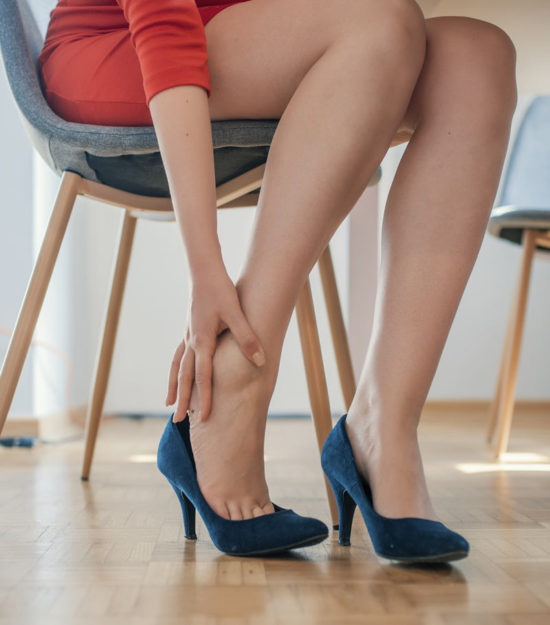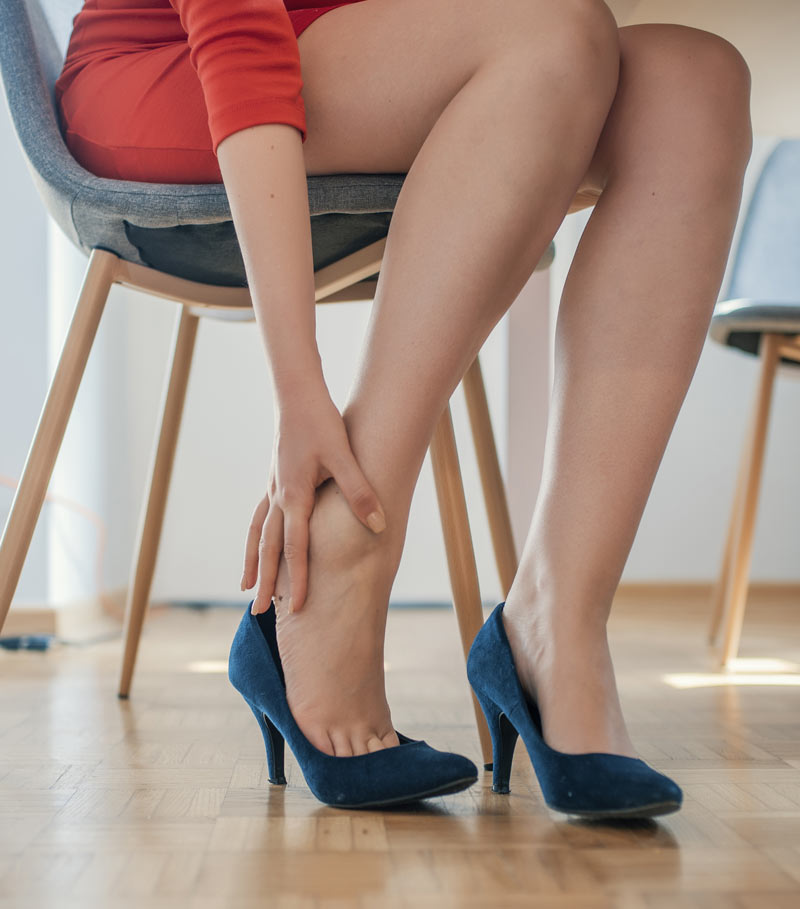
iStockphoto.com 940020928
This narrative review, excerpted here, sought to determine the prevalence of incorrectly fitted footwear and to examine its association with foot pain and foot disorders across 18 studies involving 3,205 patients.
By Andrew K. Buldt and Hylton B. Menz
Footwear has been used by humans for approximately 30,000 years. Although originally worn as protective covering for the foot, modern footwear is designed to fulfil a range of purposes, the accomplishment of which is judged on three criteria: form, function and fit. Form relates to the aesthetic appeal of footwear, while function relates to the ability of footwear to accomplish its intended purpose….. Fit pertains to how footwear can accommodate the morphology of the foot.
Footwear fitting is vitally important as in most cases fit governs function. This means that footwear cannot fulfil its intended purpose if it does not fit the foot correctly. Furthermore, it has been suggested that incorrectly fitted footwear is a major contributor to the development of structural foot disorders, such as hallux valgus and lesser toe deformity, as well as skin lesions, such as corns and calluses.
Correct footwear fitting is inherently complex … because foot morphology is highly variable between individuals, and there is limited variety in the shape of lasts used [by industry] to construct footwear.… It is therefore probable that a substantial proportion of the population are wearing incorrectly fitted footwear. With this in mind, the aim of this review is to determine the prevalence of incorrectly fitted footwear and to examine the association between incorrectly fitted footwear, foot pain and foot disorders.
- A large proportion of the population wear incorrectly sized footwear, which is associated with foot pain and foot disorders.
- Greater emphasis should be placed on footwear fitting education and the provision of an appropriately large selection of shoes that can accommodate the variation in foot morphology among the population, particularly in relation to foot width.
This article has been excerpted from “Incorrectly fitted footwear, foot pain and foot disorders: a systematic search and narrative review of the literature,” by the same authors, which appears in the Journal of Foot and Ankle Research; 2018;11:43. References have been removed for brevity. Use is per the Creative Commons Distribution 4.0 International License. To read the full article, go to https://jfootankleres.biomedcentral.com/articles/10.1186/s13047-018-0284-z.
Methodology
An electronic database search was conducted in March 2018, using the online databases Ovid MEDLINE (1946–#present) and CINAHL (1980–present).… The search strategy yielded 1681 citations. Following title and abstract review, 18 articles were included….
The majority of included studies were cross-sectional…. All except 1 study reported the method for measuring the foot. The dimensions of the foot were measured during relaxed bipedal stance in all except two studies that measured the foot while the participant was seated. It has been suggested that feet should be measured during standing to account for changes in dimensions due to splaying of the foot after the acceptance of bodyweight.
All except 3 studies measured the length of the foot, with most using a manual device, including a measurement stick, Brannock® device or calipers….
Two studies only measured foot width while 10 studies measured foot width in addition to foot length using a variety of manual devices…. Four studies measured foot width using measurements from foot tracings, while one analysed a 3-dimensional scan of a foot mould.
All except 1 study measured the shoes brought by participants to the testing session. The only study that did not measure the participants’ shoes asked participants to report their usual shoe size. For all studies, footwear dimensions were measured using the same method as the measurement of the foot.…
There were differences in the way that foot and shoe dimensions were compared and footwear fitting assessed. Several studies used a pragmatic approach guided by shoe sizing. For example, 1 study considered a shoe to be incorrectly fitted if it was at least half a British shoe size larger or smaller than the foot. In contrast, other studies considered shoe fitting to be incorrect if measurements such as overall area, length or width differed between footwear and the foot. In these cases, even though footwear and the foot may be different dimensions, footwear size may be correct. This is particularly relevant for length, as it has been suggested that appropriately sized footwear should have a space of at least 10–20 mm between the end of the foot and the shoe.
Infographic by Tristan Price for LER.










